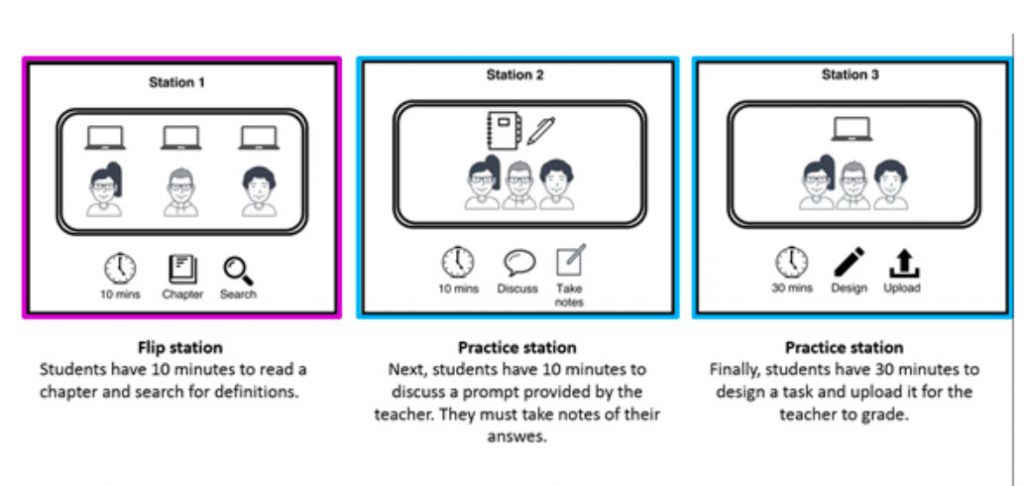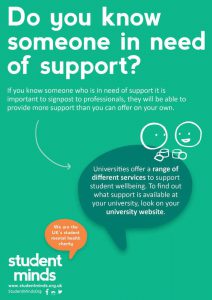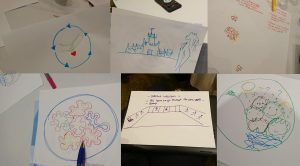Dr Edward Tew – Lecturer in Accounting, HBS.
In my previous article (https://sites.reading.ac.uk/t-and-l-exchange/2020/06/22/3143/), I have considered the definition of Flipped learning and four key pillars advocated by Flipped learning network (FLN, 2014) and explored how we can adapt and applied these four pillars in online flipped lessons which students learn either synchronously or asynchronously to meet the demand for distance/online learning, especially given the current pandemic.
On the FLN site, I came across a fascinating idea advocated by Martha Ramirez, called in-class flip. In this article, I’d like to share this in-class flipped idea with you and explore ways to apply it in an online platform such as UoR BB.
Why in-class flip?
The flipped learning is usually designed where knowledge transfer takes place online and students can pace their own learning with preassigned readings and tasks before coming into their classroom. Then the application of the knowledge takes place in the classroom, where students get support from the tutor and their peers.
However, there a few issues which require attention, particularly during this Covid-19 pandemic. Two major concerns I have are:
- students may not have access to technology outside of classroom
- students coming to class unprepared because of the issue above or generally not completing the flipped homework beforehand
Based on my past experience, in order to have a successful and effective flipped learning, students play a vital role here i.e. they must complete the at-home learning or flipped contents and come to class with some level of understanding of the lesson. This must absolutely happen. I also learn that I have no control over what happens outside the classroom. For example, I can’t guarantee reliable internet access in every student’s home at any location even I assume they have access to the internet. Not to mention the firewall issues I faced recently in my teaching with students located in China. Absolutely zero control! In addition, we cannot assume students have a perfect home-learning environment, particularly in this challenging time. In reality, we also need to acknowledge there are students who have a tendency to skip their homework for whatever reasons.
Solution: In-class flip with Station rotation model
One way to address both of these concerns is to combine the station rotation model and the flipped learning with an in-class flip (Barnes & Gonzalez, 2015).
First, let’s unpack what is In-class flip.
Gonzalez (2014) explains it in the following:
“An In-Class Flip works like this. Just like with a traditional flip, the teacher pre-records direct instruction, say, in a video lecture. But instead of having students view the content at home, that video becomes a station in class that small groups rotate through. The rest of their time is spent on other activities — independent work and group work, with some activities related to the lesson and others focusing on different course content. As with a traditional flip, the direct instruction runs on its own, which frees the teacher for more one-on-one time with students.”
In brief, an in-class flip can be defined as doing in-class stations rotation work with flipped contents. In other words, the flip takes place inside the classroom. Reading from Gonzalez’s (2014) explanation above, you probably already get some idea about the station rotation model. As the name suggests, students rotate through learning stations at the teacher’s instructional strategy for the lesson.
Ramirez (2019) suggests there are six types of stations that can be used in an in-class flip:
- Flip station: where the flipped content is. Content could be digital or paper-based
- Practice station: where students apply and practise of what they have learned from the flipped content
- Independent station: where there are “extra” resources for students to work on while other stations become available
- Feedback station: where students are asked to provide feedback about their own learning, the lesson itself, their classmates’ work or the content
- Teacher support station: where the teacher helps and provides support for students who are struggling
- Peer Instruction station: where students teach the content to each other

In a nutshell, in an In-class flip lesson, you can therefore provide the flipped content (which was supposed to be homework in flipped learning) to students in the classroom. They can go to different stations in the classroom depending on their comprehension level. For example, students can revisit the Flip station to re-learn the topic, when they are ready, they can move to a Practice station to apply what they have learned. Alternatively, they might want to visit the Teacher support station to get more support. The goal is to provide students with a variety of ways and methods to learn a class topic at their own pace and within their control.
During the in-class flip lesson, there are 4 variations to design the station rotation model, i.e. Sequence, Mixed, Looped and Half n’Half (Ramirez, 2019). Details can be read here. I’d like to consider the following two types which I think most of us can relate to.
Simple sequence

The figure above illustrates how a lesson can look like. This design has the following characteristic (Ramirez, 2017):
- Stations can be sequenced
- Students begin in sequential order and complete all tasks in each station
- The first station contains the instruction, knowledge required for the tasks – Flip station(s)
- The following stations are focus on the practice. Students apply what they learn from the first station – Practice station(s)
- Where there is a lot of students, stations can be duplicated to ensure all students start at the same pace
Mixed sequence

According to Ramirez (2017), “in this design, each student can choose and moves to any station at their own pace. Teacher monitors, clarifies and provide support. Students who need instruction will start at the flip station; those who previously know the content will skip the flip stations and start at the practice stations. Some students might know the content of one flip station and not another, and some need to go back and review content explanations, so their flow sequence varies according to previous knowledge and needs.”
Application
UoR has published Teaching and Learning: Framework for Autumn term 2020 and highlighted T&L will be a mixture of online and face to face interactive sessions. The key rationale is that “Students need time to make sense of the online recorded lectures they have engaged with and will need opportunities to verbalise, develop and apply their understanding, with tutors and with each other” (UoR, 2020, p.4). With this in mind, the in-class flip may be a solution for us to consider particularly taking into account the two major concerns I raised earlier on.
The tricky part is the application of in-class flip in an online platform. In order to apply what we understand about in-clip flip above in line with UoR T&L framework, I reckon one of the key features in Blackboard Collaborate Ultra can definitely serve the purposes of station rotation model within the in-class flip lesson. Yes, you are right! The BREAKOUT ROOMS. More about BB breakout rooms can be read here.
I must admit I have not tried this feature in the past, but I am planning to learn and use it and incorporate some of the ideas above in my modules. Perhaps this is a future post I would be writing about, at the meantime please feel free to contact me and let me know what you think about in-class flip via email at w.tew@henley.ac.uk
References
Flipped Learning Network (FLN). (2014) The Four Pillars of F-L-I-P™ , Reproducible PDF can be found at www.flippedlearning.org/definition.
Barnes, M., & Gonzalez, J. (2015). Hacking Education: 10 Quick Fixes for Every School (Hack Learning Series). Cleveland, OH: Times 10 Publication.
González, J. (2014) Modifying the Flipped Classroom: The “In-Class” Version. Retrieved from http://www.edutopia.org/blog/flipped-classroom-in-class-version-jennifer-gonzalez
Ramirez (2017) What’s an in-class flip? Retrieved from http://martharamirez.com.co/blog/whats-an-in-class-flip/
Ramirez, M (2019) What’s an in-class flip – revisited. Retrieved from https://flippedlearning.org/in-flip/whats-an-in-class-flip-revisited/
UoR (2020) Teaching and Learning: Framework for Autumn term 2020, available at: https://www.reading.ac.uk/web/files/leadershipgroup/autumn-teaching-proposal-v11.pdf
*Figures taken from https://flippedlearning.org/in-flip/whats-an-in-class-flip-revisited/ and http://martharamirez.com.co/blog/whats-an-in-class-flip/
 Student Minds is the UK’s Student Mental Health Charity, and was RUSU’s charity of the year for 2018/19. Student Mind’s aspiration is to ensure students have the skills, knowledge and confidence to talk about their own mental health and look out for their peers. To this end they provide research-driven training and supervision to university staff to enable students to be equipped to bring about positive change on their campuses through peer support.
Student Minds is the UK’s Student Mental Health Charity, and was RUSU’s charity of the year for 2018/19. Student Mind’s aspiration is to ensure students have the skills, knowledge and confidence to talk about their own mental health and look out for their peers. To this end they provide research-driven training and supervision to university staff to enable students to be equipped to bring about positive change on their campuses through peer support. The objectives are:
The objectives are:

